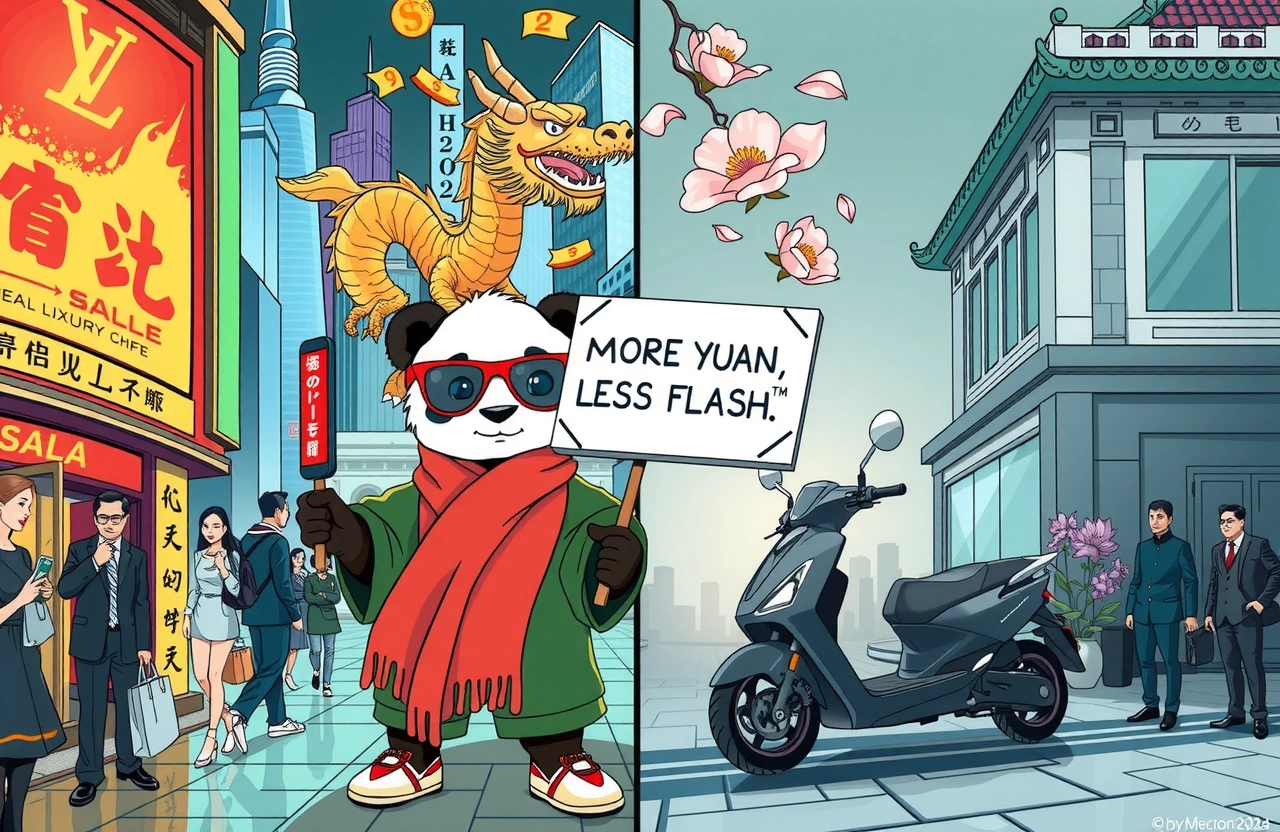The Silent Revolution in Luxury Consumption
Gone are the days when Chinese luxury spending meant ostentatious logos and flashy displays. As you walk through Shanghai’s upscale retail districts in 2025, a subtle transformation unfolds: the rise of quiet luxury. Discerning consumers now favor cashmere sweaters without branding over monogrammed handbags, custom-tailored suits over conspicuous designer labels, and minimalist timepieces that only fellow connoisseurs recognize. This shift toward discreet affluence represents more than fleeting fashion—it’s a complete reorientation of values among China’s elite. Economic shifts including property market corrections and new wealth preservation strategies have accelerated this movement. Simultaneously, maturing consumer preferences intersect with political sensitivities about wealth display, creating the perfect storm for China’s silent luxury boom where true status whispers rather than shouts.
The Drivers Behind China’s Quiet Luxury Movement
Multiple converging forces fuel this evolution from loud extravagance to sophisticated subtlety. Understanding these motivations reveals why this trend will endure beyond temporary market fluctuations.
Shifting Social Attitudes Towards Wealth
– Anti-corruption regulations since 2013 subtly discourage overt displays of wealth
– Younger affluent consumers see subtlety as intellectual sophistication
– Rising nationalism shifts preference toward quality over Western brand prestige
– Minimalist aesthetics gain cultural cachet among Gen Z and Millennial elites
– Social media drives appreciation for ‘old money’ aesthetics over flashiness
Economic Pressures Reshaping Priorities
The property market downturn has prompted strategic asset protection. Savvy investors now channel funds into movable valuables like fine watches and jewelry that maintain value discreetly. As one private wealth manager at China Merchants Bank notes: ‘Portfolios once heavy on real estate are diversifying into alternative assets including under-the-radar luxury goods—items that store wealth without attracting attention.’ Simultaneously, UHNWIs (ultra-high-net-worth individuals) facing slower wealth growth prioritize longevity over instant recognition.
Decoding the New Luxury Language
Navigating quiet luxury requires understanding its vocabulary—a lexicon where craftsmanship whispers status louder than logos.
Signature Elements of Discreet Affluence
The modern quiet luxury wardrobe emphasizes heritage fabrics and artisanal details. Expect:
– Japanese selvedge denim from boutique ateliers
– Mongolian cashmere knits with invisible hem stitching
– Leather goods featuring closed-grain calfskin that develops patina
– Custom-made eyewear with titanium cores and bespoke temple fittings
– Timepieces from independent Swiss makers like FP Journe over mainstream brands
Behavioral Shifts in Premium Consumerism
Shopping rituals transform as consumers seek curated experiences. Private appointments replace public boutiques, with luxury groups like Kering launching invitation-only Beijing salons offering made-to-order services. The consulting firm McKinsey confirms these shifting patterns in their China Luxury Report 2025, noting appointment-based purchasing grew 47% year-on-year. Digital infiltration deepens too—platforms like RED (Xiaohongshu) feature encrypted channels where trusted advisors guide buying decisions away from public view.
Market Adaptation: How Brands Are Responding
Global marques face urgent adaptation pressure as local preferences shift dramatically toward quiet luxury—a landscape where legacy European houses compete with ascending Chinese designers.
Western Luxury Titans Pivot to Discretion
– Hermès expands Haute à Porter custom clothing service across China
– LVMH highlights fabric provenance rather than logos in campaigns
– Cartier’s new Shenzhen flagship features private design suites
– Brunello Cucinelli launches ‘material education’ workshops for VIPs
– Bottega Veneta’s ₹creased to sales in China despite logo removal
Homegrown Brands Seize the Moment
Chinese designers previously exporting minimalism to Europe now find receptive domestic audiences. Brands like Una Wang and Ms Min champion subtle craftsmanship through intricate silk weaves and botanical dyes that appeal to cultural pride. Private equity firm Boyu Capital recently invested $50 million in Shang Xia, Hermès’ Chinese subsidiary, betting on locally-rooted quiet luxury. Xiaohongshu data shows searches for ‘guochao’ (national trend) luxury rose 213% last quarter. Retail experts note these designers uniquely blend Eastern philosophical restraint with contemporary silhouettes—a hybrid aesthetic perfect for China’s new mood.
Investment Dimensions of Understated Luxury
Beyond aesthetic preferences, quiet luxury represents serious asset strategy with measurable ROI implications.
Tangible Asset Appreciation Trends
Discreet pieces predominantly increase in value. Auction results highlight:
– Unbranded vintage Rolex watches appreciating 15.8% annually according to Chrono24 data
– Rare Himalayan Birkins return 25% above standard models due to scarcity
– Custom-made furniture appreciating faster than contemporary art in some sectors
The Protection Playbook
Affluent families utilize three core strategies for wealth preservation through quiet luxury: diversifying collections across categories (timepieces, rare textiles, spirits), prioritizing items with technical rarity, and leveraging professional acquisition services to identify emerging artists before mainstream recognition. Hong Kong’s Ultima Collection agency noted 70% client growth advising UHNWIs on discreet acquisitions following the 2024 property devaluations—proof that understatement becomes protection.
Future Projections: What Comes Next
This evolution toward refined subtlety reshapes luxury permanently.
The Digital Frontier of Hidden Opulence
Web3 becomes crucial for the next generation of discreet consumption through:
– NFT-authenticated digital twins proving ownership privately
– Blockchain-secured vault access replacing public insurance documents
– Metaverse galleries for sharing collections within trusted circles
– By invitation-only digital marketplaces using biometric authentication
Sustainability Convergence
Quiet luxury naturally aligns with sustainability movements. Enduring materials like recycled cashmere and regenerative leather appeal to ecologically conscious elites. Kering Group reports 82% of Chinese quiet luxury buyers cite ‘material ethics’ as crucial—surpassing even craftsmanship. Expect advanced traceability features like NFC chips hidden beneath linings, verifying ethical sourcing to VIP customers via private apps.
The allure of quiet luxury lies in its power to communicate discernment through omission. This evolution transcends passing fashion to become a philosophy of refined living where quality resonates beyond visible symbols. While Western brands adapt to these preferences, indigenous Chinese designers capture rising cultural pride with silent sophistication that reflects deepening consumer maturity. Assess your own spending through this lens: seek pieces celebrating exceptional craftsmanship rather than conspicuous branding, favor timeless materials over fleeting trends, and consider how subtle choices build enduring value. Next time you visit a boutique, train your eye beyond the logo—true luxury lingers in the whisper, not the shout.



